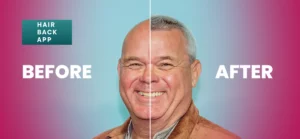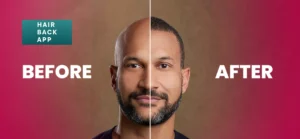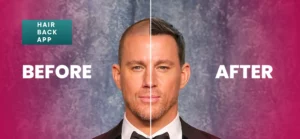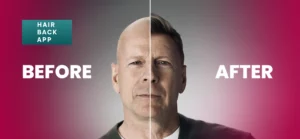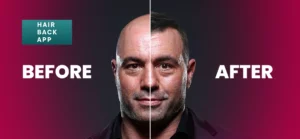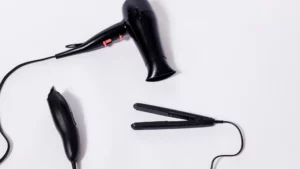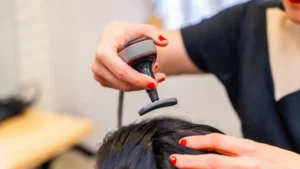Hair transplants are becoming increasingly popular among women dealing with hair loss. Female hair loss can be distressing, whether due to genetics, hormonal changes, or other factors.
My name is Emma Wright, your go-to expert hair restoration specialist. In this guide, we’ll be discussing all there is to know about female hair transplants.
Here’s a comprehensive guide to help you understand the process and what to expect.
Causes of Hair Loss in Women
Women experience hair loss for various reasons. Hereditary hair loss, also known as androgenetic alopecia, is a common cause. Hormonal changes, including those due to pregnancy, menopause, or thyroid issues, can also lead to hair loss.
Stress is another factor, often leading to a condition known as shock loss, where hair falls out suddenly. Medical conditions such as lichen planopilaris, lupus hair loss, and traction alopecia can cause significant hair loss.
Additionally, poor nutrition and certain foods that cause hair loss can contribute to thinning hair.
Types of Hair Loss
Understanding the type of hair loss is crucial for treatment. Non-scarring alopecia includes types like senescent alopecia and hereditary hair loss. On the other hand, scarring alopecia includes conditions such as lichen planopilaris, which can cause permanent hair loss.
Hair Transplant Methods
There are several hair transplant techniques available. FUT (Follicular Unit Transplantation) and FUE (Follicular Unit Extraction) are the most common methods.
FUE hair transplant is popular due to its minimal scarring. Sapphire Micro FUE uses a sapphire blade for precision, while Bio FUE hair combines FUE with biotherapy for better results.
FUT vs. FUE Hair Transplant
Follicular Unit Transplantation (FUT) involves removing a strip of skin from the donor area, usually the back of the scalp, and then dissecting it into individual follicular units to be transplanted into the thinning or balding areas. This method can leave a linear scar but allows for a large number of grafts to be transplanted in one session.
Follicular Unit Extraction (FUE), on the other hand, involves individually extracting hair follicles from the donor area using a tiny punch tool. This method leaves minimal scarring and has a shorter recovery time compared to FUT.
However, it might require multiple sessions to achieve the desired density.
Preparing for a Hair Transplant
Before undergoing a transplant, it’s important to ask questions during hair transplant consultations to ensure you get all the necessary information. Consider the cost of a hair transplant and budget accordingly. Understanding the different techniques and their outcomes can help you make an informed decision.
Questions to Ask During Consultations
Here are some important questions to ask during hair transplant consultations:
- What is the surgeon’s experience with female hair transplants?
- What technique is recommended for your specific type of hair loss?
- What are the potential risks and side effects?
- What is the expected recovery time?
- What is the total cost, including post-operative care?
The Procedure
A hair transplant involves extracting healthy hair follicles and implanting them in thinning or bald areas. This process may take several hours and multiple sessions depending on the extent of hair loss. The procedure is typically performed under local anesthesia, and patients can usually go home the same day.
Steps in the Hair Transplant Procedure
- Preparation: The donor area is trimmed, and the scalp is cleaned and numbed with local anesthesia.
- Extraction: Hair follicles are extracted from the donor area using FUT or FUE techniques.
- Graft Preparation: The extracted follicles are carefully dissected and prepared for transplantation.
- Recipient Site Creation: Tiny incisions are made in the recipient area where the grafts will be implanted.
- Graft Placement: The prepared grafts are meticulously placed into the incisions.
- Post-Operative Care: Instructions are provided for care and recovery.
Aftercare Tips
Post-transplant care is crucial for success. Hair transplant aftercare includes avoiding strenuous activities and following your doctor’s instructions carefully. Things to avoid after a hair transplant include smoking and alcohol.
Learn how to sleep after a hair transplant to avoid disturbing the grafts. It’s also important to cover your head after a hair transplant to protect your scalp from the sun and pollutants.
Detailed Aftercare Instructions
- First Night: Sleep with your head elevated to reduce swelling.
- Cleaning: Gently wash the transplanted area as instructed by your surgeon, usually starting a few days after the procedure.
- Medication: Take prescribed antibiotics and anti-inflammatory medications to prevent infection and reduce swelling.
- Avoid: Physical activities, direct sunlight, and scratching the transplanted area.
- Follow-Up: Attend all scheduled follow-up appointments to monitor progress and address any concerns.
Potential Side Effects
Be aware of possible side effects, such as swelling after a hair transplant, which is common and temporary. Folliculitis after a hair transplant, or inflammation of hair follicles, can also occur. Shock loss after a hair transplant is another potential side effect, where you may experience temporary hair shedding.
Common Side Effects
- Swelling: Can occur in the forehead and around the eyes, typically subsiding within a week.
- Itching: A common side effect that can be managed with prescribed medication.
- Temporary Hair Loss: Known as shock loss, this temporary shedding usually occurs a few weeks after the procedure but is followed by new growth.

Long-Term Care
For long-term success, use minoxidil after a hair transplant to promote hair growth. Consider finasteride after a hair transplant if prescribed by your doctor. Regularly wash your hair after a hair transplant as per your surgeon’s guidelines.
Maintaining Hair Health Post-Transplant
- Minoxidil: Apply as directed to stimulate hair growth.
- Finasteride: Consult your doctor about using this medication to prevent further hair loss.
- Scalp Care: Maintain a healthy scalp by using gentle hair care products and avoiding harsh treatments.
Styling Your Hair Post-Transplant
Post-transplant, you can opt for the best haircut after a hair transplant to suit your new hair growth. Style your hair to hide a receding hairline or thinning areas.
Tips for Styling Post-Transplant
- Haircuts: Choose styles that add volume and fullness to your hair.
- Products: Use lightweight styling products that don’t weigh down the hair.
- Heat Styling: Avoid excessive heat to prevent damage to the new hair follicles.
Alternative and Complementary Treatments
Consider additional treatments like PRP (Platelet-Rich Plasma) therapy to stimulate hair growth. Microneedling for hair loss can enhance scalp health and promote growth. Red light therapy promotes hair growth through low-level laser therapy. Anti-hair loss helmets use laser technology for hair regrowth. Saw palmetto for hair loss is a natural remedy that may help.
Exploring Other Treatments
- PRP Therapy: Involves injecting platelet-rich plasma into the scalp to stimulate growth.
- Microneedling: Creates tiny punctures in the scalp to enhance product absorption and stimulate growth.
- Red Light Therapy: Uses low-level lasers to stimulate hair follicles.
- Anti-Hair Loss Helmets: Wearable devices that use light therapy.
- Natural Remedies: Saw palmetto and other supplements that may support hair health.

Understanding Hair Loss Patterns
Recognize different hair loss patterns using tools like the Ludwig scale, which measures female pattern baldness, and the Sinclair scale, another measure for female hair loss. While male pattern baldness is less common in women, understanding it can be helpful.
Hair Loss Scales
- Ludwig Scale: Classifies female pattern hair loss into three types based on the severity of thinning.
- Sinclair Scale: Offers another method to assess the extent of female hair loss.
Managing Seasonal Hair Loss
Hair loss can be seasonal. Winter hair loss, for example, can be exacerbated by cold weather. Understanding these patterns can help in managing and preventing hair loss during specific seasons.
Tips for Seasonal Hair Care
- Hydration: Keep your scalp hydrated during dry winter months.
- Protection: Wear a hat to protect your hair from harsh weather conditions.
- Nutrition: Maintain a balanced diet rich in vitamins and minerals that support hair health.
Addressing Stress-Related Hair Loss
Stress management is crucial for hair health. Learn how to regain hair loss from stress through relaxation techniques and lifestyle changes. Practicing mindfulness, engaging in regular physical activity, and maintaining a healthy diet can significantly impact hair health.
Stress Management Techniques
- Mindfulness and Meditation: Helps in reducing stress levels.
- Exercise: Regular physical activity promotes overall well-being.
- Balanced Diet: Consuming foods rich in vitamins and minerals supports hair health.
Conclusion
Female hair transplants can offer a permanent solution to hair loss. By understanding the causes, types of hair loss, and the available treatments, women can make informed decisions about their hair restoration journey.
Whether opting for a hair transplant for long hair or exploring new hair loss treatments, staying informed and proactive in managing hair health is key. Embracing the right aftercare practices, exploring complementary treatments, and understanding the patterns and causes of hair loss can lead to a successful and satisfying hair transplant experience.


